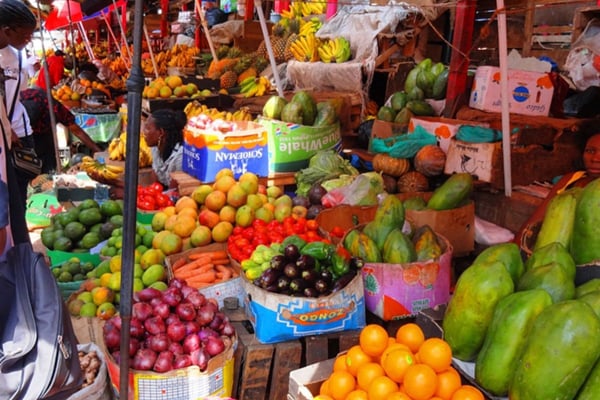
Abu Kikomeko (left), her sister Rebecca Nakyanzi (right) and mother Glades Ssebwira (centre), all vendors, prepare to sleep next to their items at Nakasero Market in Kampala on June 29. The BoU anticipates a rise in inflation. PHOTO/FILE
|Finance
Prime
BoU projects rise in inflation
What you need to know:
- BoU says inflation forecast in the next 12 months will likely continue to rise as the economy recovers.
Bank of Uganda (BoU) has said it decided to maintain the Central Bank Rate (CBR) at 6.5 percent to support the normalisation in the economic recovery since it anticipates a rise in inflation.
Inflation is the rate of increase in prices of goods and services over a given period of time. It is a broad measure, such as the overall increase in prices or the increase in cost of living in the country.
What the rise in inflation means is that it will erode the average person’s purchasing power, affect domestic savings since prices of goods and services go up and force people to adjust their budgets.
A rise in inflation results into high cost of living and high borrowing costs from the banks, because it lowers people’s capacity of borrowing to expand their investments.
At the end of November, Uganda’s annual headline inflation, which includes all items in the basket of goods and services stood at 2.6 percent while core inflation, which excludes food crops, metered water energy (electricity) in the basket rose to 2.1 percent.
In the monetary policy statement issued yesterday, the Governor of Bank of Uganda, Mr Emmanuel Tumusiime Mutebile, said inflation forecast in the near terms (12 months ahead), amid high uncertainty, will likely continue to rise as the economy recovers further.
He said the rise in inflation will reflect strong producer price inflation domestically and abroad and import prices.
“In the medium (2 to 3 years ahead) as demand recovers with the full reopening of the economy and the release of the pent-up demand inflation is forecast to rise, but stabilise around the 5 percent target, contingent on the evolution of the pandemic and the efficacy of vaccines,” he said.
Mr Mutebile further explained that the most significant risk is the duration of disruption to the global production chain.
“Stronger global costs push inflation pressure, stemming from sharply rising prices and limited supply of production inputs could result in higher domestic inflation, especially so, if combined with a weaker shilling. If the exchange rate were to depreciate significantly, partly on account of monetary policy normalisation in advanced countries this would increase the overall inflation pressures and foster a need for higher interest rates,” he said.
Mr Mutebile said on the downside, a faster resolution of global supply chain disruptions, lower international commodity prices and another season of good food crop harvest could cause inflation to remain subdued.
He said the BoU will continue with intervention for those sectors that remain under lockdown, adding that the institution will maintain the Covid-19 Liquidity Assistance Programmes (CLAP) to ensure financial stability as the economic situation normalises.
Commenting on the economy, the BoU boss said economic activity is gradually normalising after the second wave of Covid-19.
He said indeed the high-frequency-indicator of the economic activity for October and November suggest that the economy had considerable momentum into the fourth quarter, although the resurgence of the Covid-19 variants has undoubtedly clouded the near term outlook.
Mr Mutebile expressed confidence that the economic growth is still expected to improve, supported by expansion in global demand, higher private sector expenditure and continued policy support.
“If the economy is fully opened in January 2022, currently being projected, this will release some of the pent-up domestic demand from the past two years that should stimulate economic growth. Casting the uncertainty over the outlook presented by the Covid-19 variant like Ominicron and whatever variant follows it...” he said.
EFFECT ON GDP
BoU indicates that import growth is expected to outpace the export growth due to a recovery in import -intensive household consumption and private investment. As a result, the contribution of the net export to Gross Domestic Product growth will be negative for an extended period.




